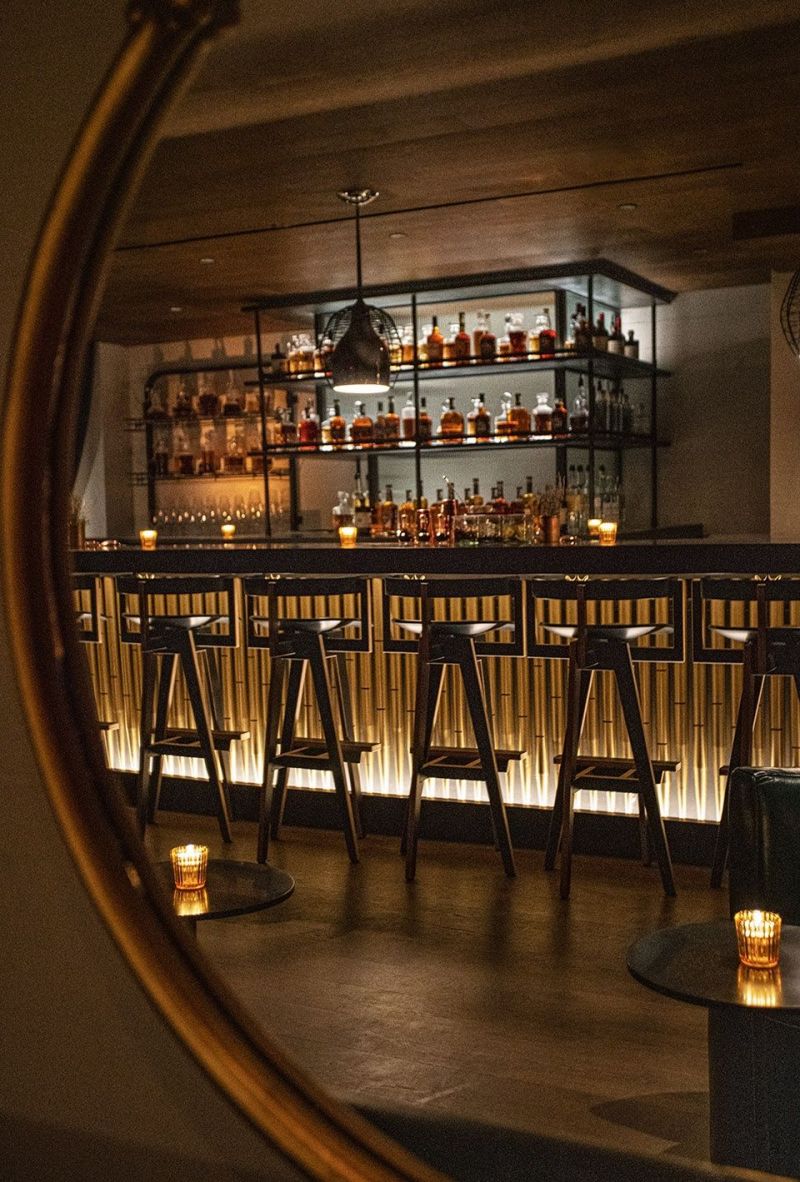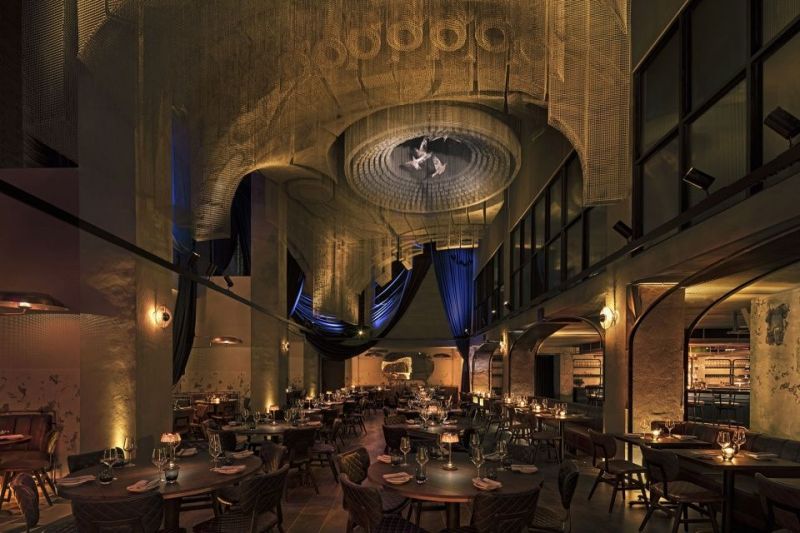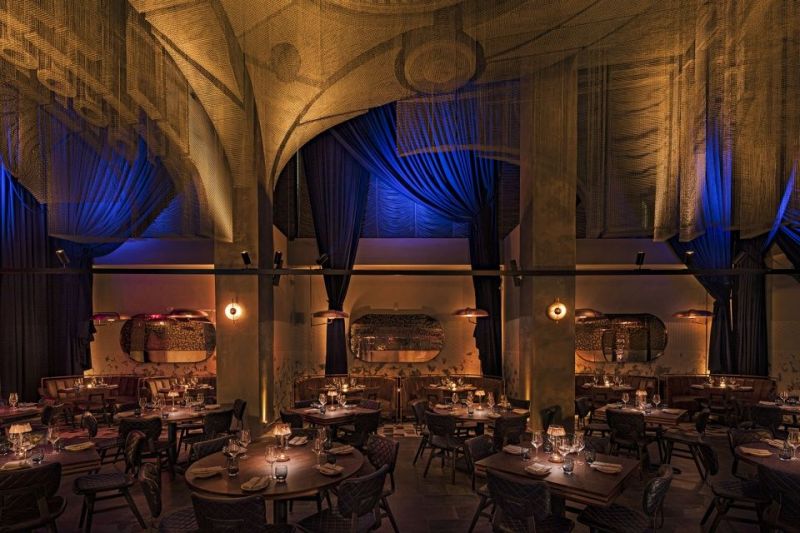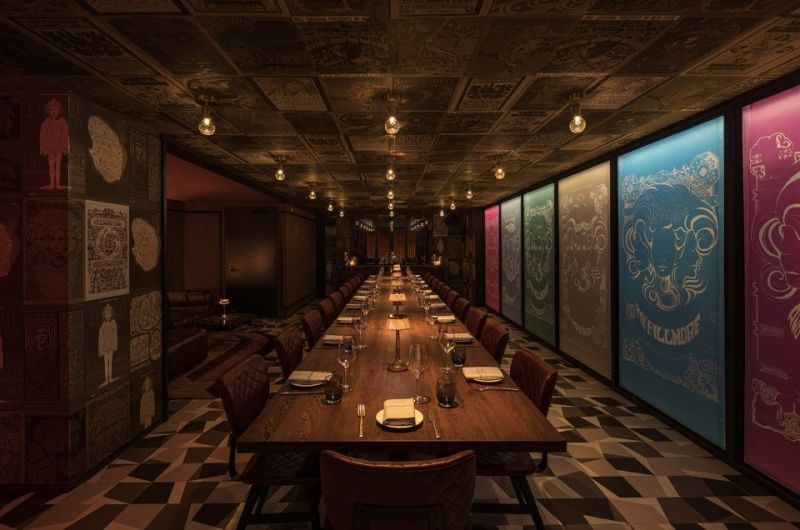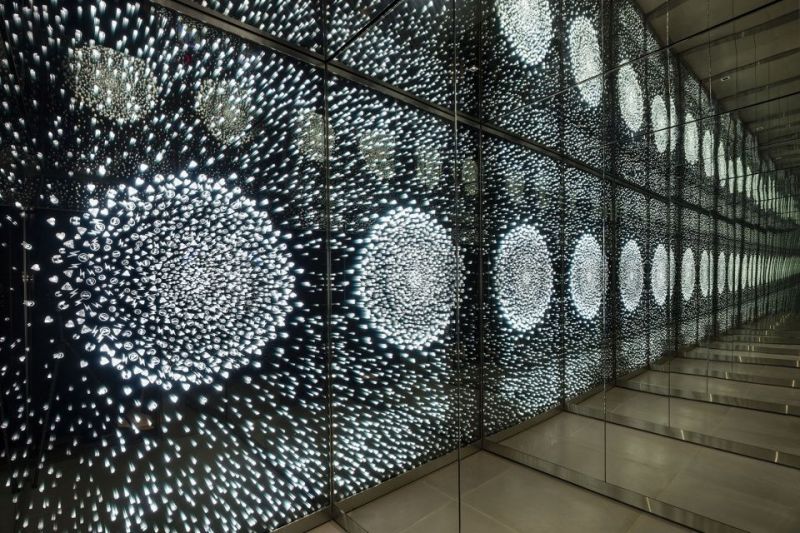Moxy East Village by Rockwell Group
Leading architecture and design studio Rockwell Group has just unveiled the interiors of Moxy East Village. The new hotel is Rockwell Group’s third collaboration with the brand following Moxy Times Square and Moxy Chelsea. Situated across from famed music venue Webster Hall and just blocks away from NYU and Union Square, the new Moxy East Village is a nod to this vibrant, ever-transforming neighborhood.
Rockwell Group’s design concept celebrates urban New York’s rich patina—the well-loved layers from different eras that co-exist in every neighborhood or even within a single building. The interiors of Moxy East Village have an urban edge and also feature bespoke art installations by numerous contemporary artists. Each floor reveals a different layer in the neighbourhood’s narrative to evoke memories of the city and create a sense of discovery for guests.
Design Details
Entrance / Lobby
Reflecting the area’s industrial edge, a tough material palette throughout the ground floor entrance makes the first impression on guests arriving at Moxy East Village. Lying just below street level, Corten steel walls extend from the façade into the lobby, while smooth concrete at the entrance stairs meets blackened steel and board-formed concrete details within. Influenced by downtown New York’s role as an incubator for the dissident creative scene of the 1970s and 80s through to the present day, the hotel’s public spaces—including the lobby, Moxy’s signature 24- hour grab-and-go bar, and a lounge— have a raw, gritty look inspired by the neighborhood’s art and music scene. The check-in desks by local artist Michael Sanzone Studio are made from found objects and are reminiscent of patch-worked antiques. A graffiti graphic tapestry by the LIC-based studio En Viu on the wall behind the check-in desks bleeds onto the floor creating a surreal moment to stop guests in their tracks. Moving around the hotel, Rockwell Group’s design continues to surprise and delight, the lifts that transport guests from the lower level to the upper level guestrooms and rooftop have been conceived as a catalyst for change. Blackened steel elevator doors open to reveal an interior with infinity glass and a custom graphic that appears to be composed of emojis, while a grand staircase with a playful likeness to a New York City fire escape leads guests to the hotel’s restaurant.
Little Sister Bar & Lounge (Level C2)
the Little Sister Bar with a wood-clad barrelvaulted ceiling, strips of LEDs emphasize niches and the bar area
Descending into the sub-cellar lounge, the staircase features an abstract spray-painted mural by the San Francisco-based artist Apex and leads to a space that references New York’s deep history, stretching back to its agricultural heyday. The cavernous yet intimate space is hugged by a wood-clad barrelvaulted ceiling while strips of LEDs emphasise niches and the bar area, changing color to accommodate mood and events. At the bar, vintage light fixtures and long, jewel-toned banquettes add warmth while a dreamy, pastoral wallcovering further hints at New York’s bucolic past. Additional luxurious touches include a stone bar with a copper bar die and mirrored backbar, and the red velvet seating with embossed leather accents in the VIP area.
Partial view of the cavernous yet intimate Little Sister Bar
Cathédrale Restaurant (Level C1)
The triple-height main dining room of the Cathédrale Restaurant, the curtain hanging from the ceiling can change its formation
The raw, industrial space of the restaurant sets the scene for outrageously decadent feasts set within a subterranean enfilade. Rockwell Group has conceived an environment inspired by the Fillmore East, Bill Graham’s legendary Lower East Side concert hall that featured the Doors, Janis Joplin, and Elton John and other influential rock musicians from the late 1960s to its closure in 1971. The design concept pays homage to the Fillmore East building, which represents so much of the East Village’s energy and character. Guests descend into the restaurant by way of a long metal stair that feels like a fire escape between two East Village buildings, with a brick and gold wall on one side and a concrete wall on the other. The stair reveals eye-catching surprises and quick glimpses into the restaurant. Marquee lighting announces the entrance to the restaurant bar, which balances luxe details with raw concrete and patinaed layers, giving guests the sense that they are stepping back in time and becoming a/ playing a part of/in New York history. A long, staggered bar circles around so that guests can see each other and soak up the atmosphere as opposed to looking onto a backbar, while an overhead canopy has a light screen and LED signs from famous East Village haunts.
The restaurant’s main dining room is a triple height space with layered plaster walls and features major art pieces. Rockwell Group invited Italian artist Edoardo Tresoldi to collaborate on a concept for an installation for the restaurant’s main dining room space. Tresoldi created Fillmore – a floating metal mesh ceiling sculpture that creates a dialogue with the restaurant’s architecture. An outdoor dining patio feels like a hidden courtyard with a retractable roof and a copper framing system adorned in planters on the back wall giving the space an indoor-outdoor feel.
Partial view of the main dining room with Fillmore – a floating metal mesh ceiling sculpture
Concert posters from Fillmore East line the walls and ceiling of the private dining room for an immersive rock ‘n roll feeling. Corridors leading to the cloakroom and bathrooms continue the restaurant’s edgy design with exposed copper pipe and interactive neon installations.
Interior view of the guest elevator with infinity glass and a custom graphic
Resource website:
https://www.gooood.cn/moxy-east-village-by-rockwell-group.html
Post time: Dec-16-2021


